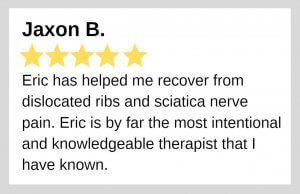If you are experiencing pain in your joints or muscles, you may start wondering whether you should see an orthopedic therapist to help alleviate your discomfort. An orthopedic therapist is a medical professional who specializes in the diagnosis and treatment of musculoskeletal issues. They can help you with various issues, including arthritis, sprains, and fractured bones.
Your musculoskeletal system is what allows your body to move. Bones, joints, muscles, tendons, and ligaments are all part of it. When these components fail to function properly, it can lead to pain and movement issues. While minor aches and pains can frequently be addressed at home, an orthopedic specialist should examine more serious problems.
Knowing whether to contact an orthopedic therapist can be difficult, but these indicative signs will tell you whether or not you should pick up the phone and make an appointment.
When Should I See An Orthopedic Therapist?
Deciding whether to schedule an appointment with an orthopedic therapist or wait it out could be difficult. Consider the following warning signals before scheduling an appointment with your orthopedic therapist:
1. Swollen Joint

Swelling occurs in the soft tissues surrounding the joints when fluid accumulates in your tissues. Bacterial infections, trauma, or chronic or reactive arthritis can cause it. Swollen joints can also be caused by gout, osteoarthritis, psoriatic arthritis, and septic arthritis.
Rheumatic fever, hypothyroidism (underactive thyroid gland), and ankylosing spondylitis are all rare causes of swollen joints.
Joint swelling requires an orthopedic assessment in an orthopedic sports and spine rehabilitation center, especially if it’s accompanied by discomfort. You should also see an orthopedic therapist if you’ve got a fever and swollen joints.
2. Back Pain
Back pain can affect anyone. Statistics show that 80 percent of people, from young to old, suffer from lower or upper back discomfort. Daily activities such as standing in the kitchen, overdoing exercises, lifting some weights, and prolonged sitting could induce mild back pains.
But suppose your back discomfort is continuous, chronic, and worsening, leading you to lose control of your bladder or bowels and weaken your leg muscles. In this case, seeking medical assistance from an orthopedic rehabilitation specialist is critical to avoid life-threatening situations and further deterioration.
3. Chronic Or Persistent Joint Pain
A long-lasting joint ache is a warning indicator. Chronic pain can last 3-6 months or never go away. This discomfort could be caused by inflammation or swelling around your joints, but it could also be caused by the bones in your joints rubbing against each other. All of these indications and symptoms could point to arthritis.
Women are more prone compared to men to develop arthritis. As people age, their chances of developing arthritis increase. However, depending on their risk factors, people as young as 20 could get arthritis. Being overweight, having experienced joint injuries, and regularly bending a joint while doing a day-to-day chore or at work are all risk factors for arthritis.
Pain for a couple of days is one thing, but continuous pain for a few weeks or months should prompt you to seek expert assistance and appropriate orthopedic therapy services.
4. Difficulty In Climbing Stairs

Many persons with knee difficulties find it difficult to descend and ascend stairs. Most commonly induced by arthritis, which causes cartilage degeneration that cushions your knee joints, trouble moving down and up the stairs indicates knee joint deterioration.
Even minor arthritis and the absence of protective padding in the knee joints can make ascending stairs quite difficult. As a result, if you feel any pain or discomfort when using the stairs, you should immediately contact an orthopedic doctor and take action before the discomfort develops.
5. Neck Pain that Is Increasing In Severity
Neck pain can be caused by prolonged smartphone and computer use that stresses the neck muscles. This neck discomfort could be addressed at home with mild medicines and rest due to over-exhaustion.
However, suppose your neck discomfort persists for a couple of days and is accompanied by weakness or numbness in your arms or hands, shoulder pain, or headache. In that case, you should seek medical assistance immediately.
Osteoarthritis (bone spurs), rheumatoid arthritis, and herniated disks (producing nerve compression) are the most common reasons for increased and persistent neck pain. In rare cases, increased neck pain might indicate more serious conditions such as cancer or meningitis.
6. Sprained Or Twisted Ankle
The ankle becomes sprained once the ligaments that support the ankle are ruptured or injured. Ankle sprains are common injuries caused by jogging, running, stepping on an object, or walking on uneven terrain, but they are especially common when participating in sports.
If not treated properly, they could cause debilitating pain and lead to long-term illnesses such as post-traumatic arthritis.
An orthopedic physical therapist can help you recover and return to normal activities within 6 to 12 weeks, based on the ligament tear’s seriousness, discomfort, ankle swelling, and ankle instability. Nonsteroidal drugs, ankle supports, and flexible footwear are also recommended to avoid recurring sprains and instability.
7. Weak, Bruised, and Stiff Muscles
If you just received an injury and are now experiencing pain, swelling, and a bluish tint surrounding the injury, you may have a muscle contusion. These wounds form when the body collides with a hard item or a blunt object strikes a muscle. Although your skin is not damaged, the muscle fibers are fragmented, and blood could occasionally accumulate beneath the skin, causing a lump to grow over the wound.
You can avoid serious problems from deep muscle contusions by obtaining urgent medical assistance and following your orthopedic therapist’s rehabilitation advice.
8. Instability When Walking
When there’s an issue with the musculoskeletal system, you may experience difficulty balancing and moving. They’re usually an indicator of foot or ankle problems. Injuries to other regions of your body can also come from insecurity.
Seeing an orthopedic therapist is the best method to determine the origin of your balance or mobility concerns and find a solution, whatever they might be.
9. Numb or Tingling Hands And Feet

The “pins and needles” sensation or tingling in the feet, hands, or both is common and unpleasant. This feeling is sometimes harmless and only lasts a short time. It could, for example, be caused by pressure on your nerves while you are sleeping if your arm is twisted beneath your head. It could also be caused by long leg crossing, which exerts nerve pressure.
Tingling, on the other hand, is frequently severe or chronic. Other symptoms, such as discomfort, itching, numbness, and muscular atrophy, may also occur. Tingling may indicate nerve damage in these cases, which various disorders, including systemic illnesses such as diabetes, multiple sclerosis, traumatic injuries, repetitive stress injuries, viral or bacterial infections, and exposure to toxic substances can cause.
10. Pain On Repetitive Motion
Our joints could only endure a given amount of repetitive motion despite being meant to move. You may develop joint discomfort if you’ve got a physically demanding job or participate in a sport requiring repetitive movements.
This is especially true if the repetitive motion could be made better. Strenuous exercise, awkward positions, and vibrating devices can also cause pain.
Repetitive motion injuries often affect the wrist, shoulder, elbow, and hand. However, they could occur in the neck, back, knee, and hip. If you work or play a sport requiring repetitive actions, taking frequent breaks and stretching is essential. If you are experiencing pain while engaging in repetitive activities, consult an orthopedic professional.
Why Should You Visit an Orthopedic Therapist?
An Orthopedic Therapist Could Help Reduce Pain
One of the most common reasons patients visit orthopedic doctors is pain. These doctors are experts in the musculoskeletal system, understanding the different types of joints and how they function. Nerves, muscles, bones, joints, tendons, ligaments, cartilage, and other connective tissue are all included. Various musculoskeletal diseases and injuries can cause discomfort, and orthopedic specialists can frequently assist in lessening or eliminating discomfort.
An Orthopedic Therapist Can Help Improve The Range Of Motion
A restricted range of motion might be caused by pain, injury, edema, or joint stiffness. When your range of motion is restricted, it may be difficult or unpleasant to accomplish daily chores such as carrying items, caring for oneself, and even walking. Orthopedic specialists can help you increase your range of motion and return to normal. Non-surgical treatment, physical therapy, and, in some cases, surgery are commonly used to increase the range of motion.
An Orthopedic Therapist Could Make It Easier To Perform Everyday Tasks

Many people are willing to “tough it out” and live with pain, stiffness, reduced range of motion, and other bothersome symptoms that do not interfere with their lives. When it becomes difficult to conduct daily actions, such as reaching into a cabinet, bending over to retrieve something off the floor, or even going for a stroll or getting out of bed, it’s time to consult a doctor. Orthopedic specialists could consult with you to determine the origin of your symptoms and devise a treatment plan appropriate for you and your lifestyle.
An Orthopedic Therapist Could Treat Injuries And Might Be Able To Help Prevent Injuries
People contact orthopedic surgeons for various reasons, including broken bones, stress fractures, compression fractures, dislocations, muscle strains, and tendon ruptures or rips. Athletes will typically consult with orthopedists to prevent future injuries and improve performance.
Some athletes, for example, are at risk of shoulder dislocation. And after one dislocation, they’re more vulnerable to future dislocations. Therapy can aid in the prevention of future dislocations.
An orthopedic specialist can assist you regardless of the nature of your ailment.
Final Thoughts
If you have persistent, recurring, or unresponsive joint, bone, or muscle swelling or pain that cannot be treated at home, or if you have a problem performing daily activities because of a significant reduction in the range or mobility of motion of a joint, like your knee, elbow, or shoulder, you should consult an orthopedic therapist.
Furthermore, nerve-related symptoms such as tingling, numbness, or a sensation of “pins and needles” in your legs or arms necessitate the attention of a specialist.
If you need expert medical assistance from one of the best rehabilitation centers for orthopedic services in Central Texas, please reach out to us at Precision Sports Physical Therapy today. Our world-class orthopedic therapists can help alleviate your pain and treat your injuries.

